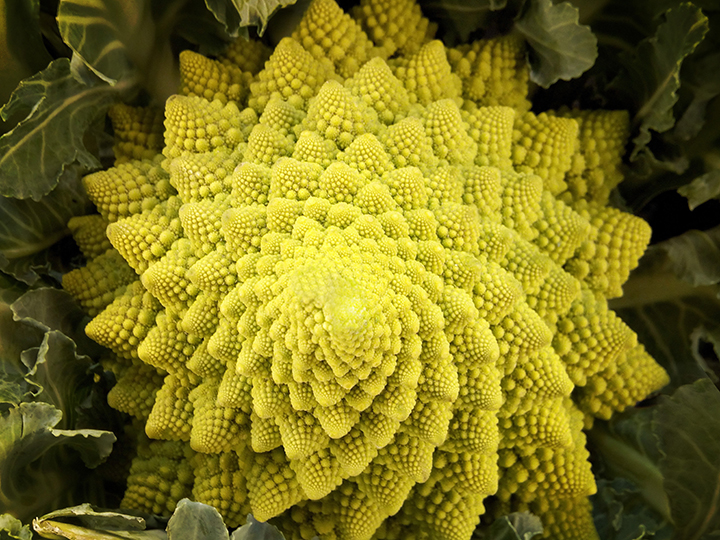Part II
OF ORDER AND CHAOS
Our world is both orderly and chaotic. Newtonian mechanics can predict the planetary motions and gravity produces predictable universal effects. In this sense, science speaks of deterministic conditions or predictable sets of outcomes. But in many other instances, what starts as determinism gives way to chaos or unpredictability. Roll a ball down a hill and the deterministic law of gravity is in effect. But, you can’t determine the exact trajectory of the ball or exactly where it will come to rest. You might be able to approximate the vicinity in which it lands but that’s probability, not predictability.
Chaos theory concerns itself with variances in initial conditions of deterministic systems leading to uncertainty. Our ball can start under deterministic conditions, but it morphs into chaos as a result of minute changes in wind or ground conditions as it moves downhill through time and space. A hurricane’s path can be predicted to a certain point but then variables like water temperature, land proximity, ocean depth, and ambient air pressure kick in to make the point of landfall unpredictable. The best we can do is speak of probabilities. Speaking of probabilities, the quantum field from which our world arises is chaotic in the sense that quantum motions can only be described in probabilistic terms and never be absolutely determined.
FORCES OF NATURE
Fractals– Chaos theory is about ordered actions producing chaotic (differing) results. Science has noted natural and mathematical patterns related to chaos called fractals. These are similar, repetitive (recursive) patterns occurring at differing scales. Like a hologram, each fractal segment is a similar but slightly different reflection of the whole of which it is part. Mathematically, minute changes in the initial creative conditions produce similar but unpredictably different fractal patterns.
A common example of fractals in nature is a close-up of a Romanesco cauliflower. Each small segment looks like the whole cauliflower.
On a scaled basis, you can say the small gives rise to the large or the large reduces to the small. This recursive generation process of similar but different forms is exactly described in the Gnostic creation story in Part I. The parts or created spiritual beings looped back on the Whole to co-create or generate new beings of differing vibrations. Vibrations in this case can be defined as levels of consciousness.
Entropy–Even speaking of seemingly embedded predictably deterministic laws like gravity and Newtonian mechanics, we must acknowledge that chaos is the ultimate outcome. Why? Entropy. Entropy is the degradation of the matter and energy in the universe to an ultimate state of inert uniformity. Nothing is permanent in this world. Everything degrades—our bodies and ultimately all features of the universe. We are like a bubble, a ripple in the quantum energy field from which we arose, and bubbles eventually burst.
AN ATTRACTIVE PROPOSITION
Chaos theory is really about understanding how dynamic objects move through space and time. All movement mathematically occurs through phase space, which can be plotted as vectors on a Cartesian X and Y axis. The forces that control the patterns of movement are called Attractors. The Attractors create the three basic patterns of movement in the pictures below.
The first pattern shows the objects rotating into a single point or singularity in the axis center. The second pattern is like a rotating loop around the center point. The third pattern forms a continuous loop where no point or object ever repeat the same trajectory or touches another point. This is a fractal pattern. At a certain juncture depending on the initial number input (the initial condition) it displays the organized butterfly pattern shown or it flies off into uncharted infinity (chaos). No wonder it’s called the Strange Attractor.
Human beings are dynamic objects moving through space. I submit that our attractors are levels of consciousness, the force of our minds that govern our actions either consciously or unconsciously. To understand the significance here, let’s go back to where we started with the Gnostics.
GNOSTIC REDUX
Human Attractors–The Gnostics identified three types of human beings as defined by their levels of consciousness or spiritual awareness. These were the pneumatic, psychic, and hylic. Translated from Greek, this would be the spiritually-oriented, the mind-oriented, and the materially-oriented. Let’s match this information to the graphics above.
Most spiritual traditions and religions believe in a higher power in a dimension of harmony and unity. People of this orientation actively work toward that state according to their best comprehension. This type of attractor would lead to the tightly focused singularity depicted in the first graphic. The mind-oriented are those who are unsure but questioning or seeking with a feeling that something greater may exist beyond material appearances. Their consciousness would graph as a looser but organized rotation around the center point Attractor in the middle diagram. The materially-oriented are those completely taken in by material appearances with no belief in any consciousness beyond their own. That is ultimately chaotic and so relates to the last chaotically expanding graphic.
I don’t want to oversimplify or attach any judgment values to the speculations above. Every consciousness type will experience what appears to be randomness and chaos in their lives. An old popular TV show called Kung Fu was about an Asian monk in the Wild West. All kinds of bad things happened around him. The theme of the show was built around how he maintained his inner equilibrium. His awareness of higher forces enabled him to bring personal order to the chaos around him. That bubble of order and equilibrium is spiritual consciousness in action.
Peter Canova
The author of the 25 X award-winning First Souls Trilogy and has contributed to the popular Chicken Soup for the Soul series. His latest publication, Quantum Spirituality, received 4 titles in The American Book Fest’s 2023 Best Book Awards.
https://www.petercanova.com/




